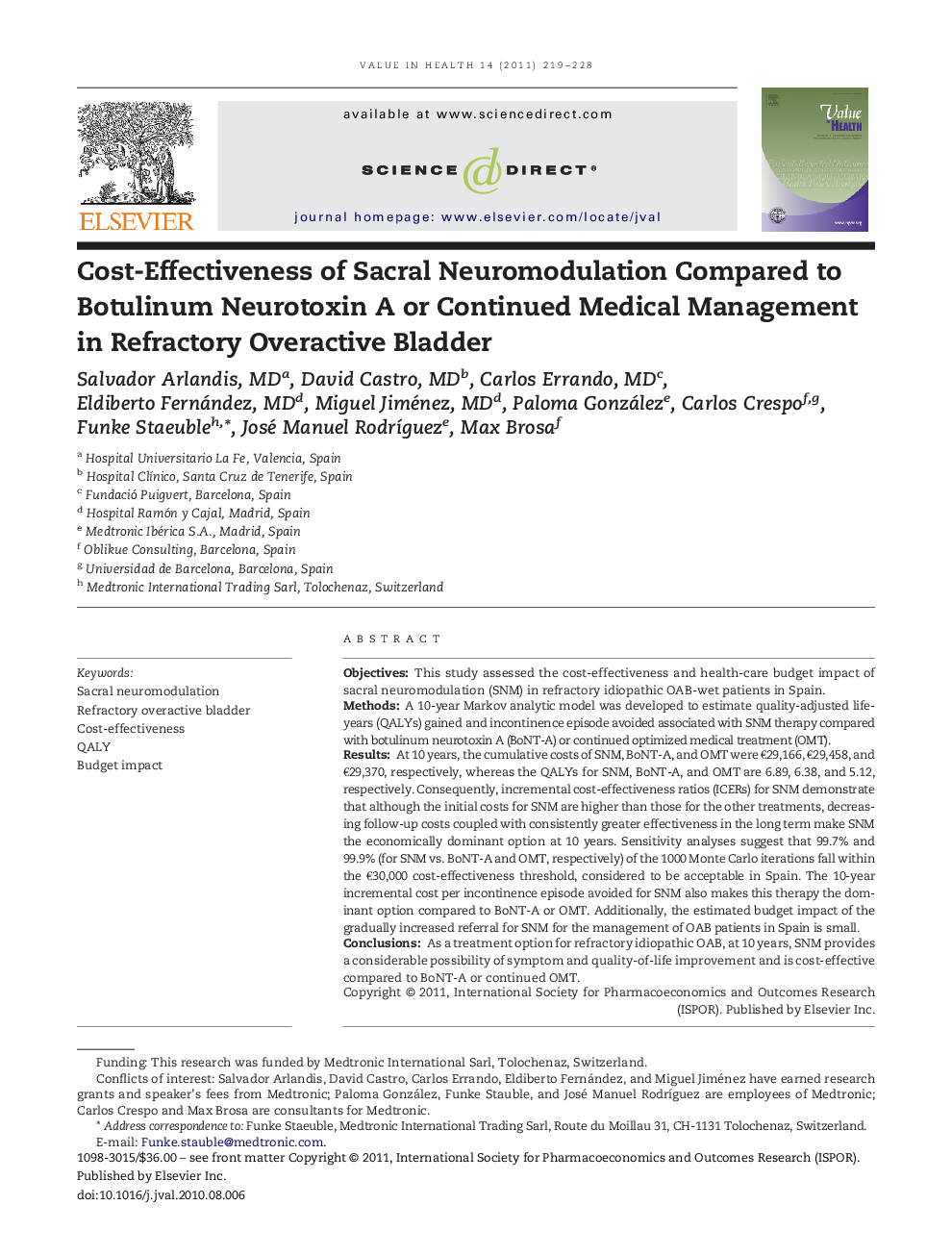| Article ID | Journal | Published Year | Pages | File Type |
|---|---|---|---|---|
| 987800 | Value in Health | 2011 | 10 Pages |
ObjectivesThis study assessed the cost-effectiveness and health-care budget impact of sacral neuromodulation (SNM) in refractory idiopathic OAB-wet patients in Spain.MethodsA 10-year Markov analytic model was developed to estimate quality-adjusted life-years (QALYs) gained and incontinence episode avoided associated with SNM therapy compared with botulinum neurotoxin A (BoNT-A) or continued optimized medical treatment (OMT).ResultsAt 10 years, the cumulative costs of SNM, BoNT-A, and OMT were €29,166, €29,458, and €29,370, respectively, whereas the QALYs for SNM, BoNT-A, and OMT are 6.89, 6.38, and 5.12, respectively. Consequently, incremental cost-effectiveness ratios (ICERs) for SNM demonstrate that although the initial costs for SNM are higher than those for the other treatments, decreasing follow-up costs coupled with consistently greater effectiveness in the long term make SNM the economically dominant option at 10 years. Sensitivity analyses suggest that 99.7% and 99.9% (for SNM vs. BoNT-A and OMT, respectively) of the 1000 Monte Carlo iterations fall within the €30,000 cost-effectiveness threshold, considered to be acceptable in Spain. The 10-year incremental cost per incontinence episode avoided for SNM also makes this therapy the dominant option compared to BoNT-A or OMT. Additionally, the estimated budget impact of the gradually increased referral for SNM for the management of OAB patients in Spain is small.ConclusionsAs a treatment option for refractory idiopathic OAB, at 10 years, SNM provides a considerable possibility of symptom and quality-of-life improvement and is cost-effective compared to BoNT-A or continued OMT.
